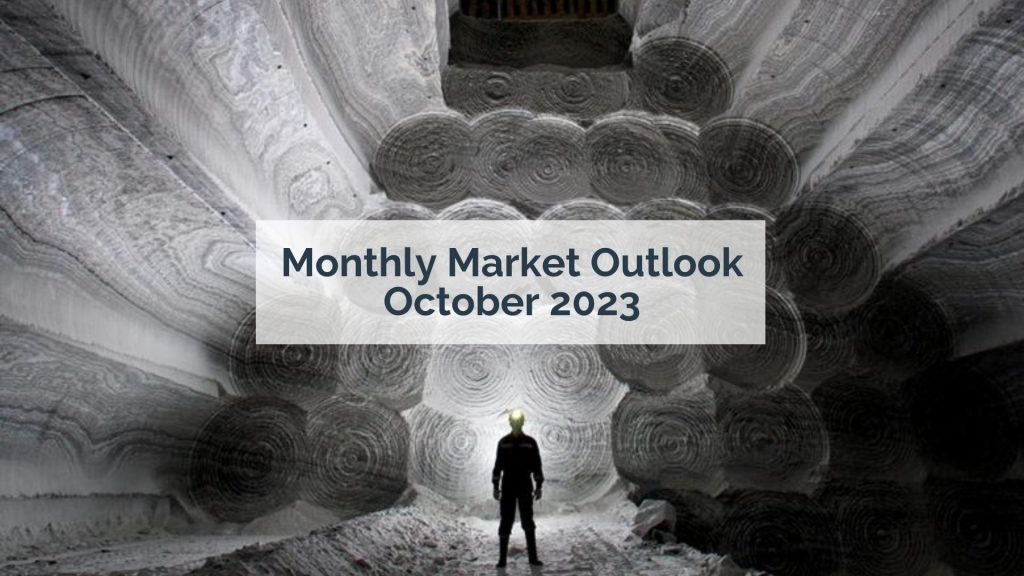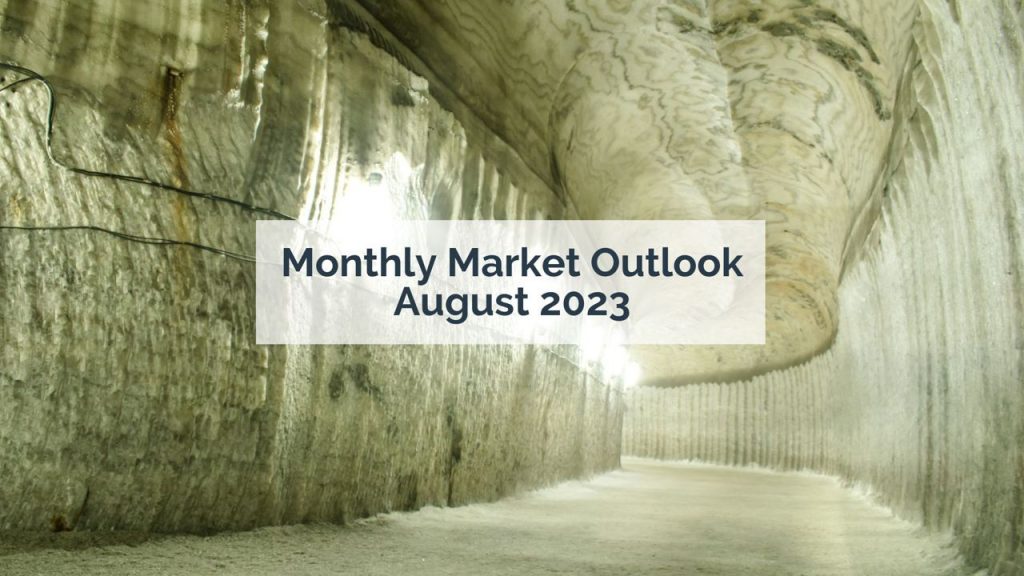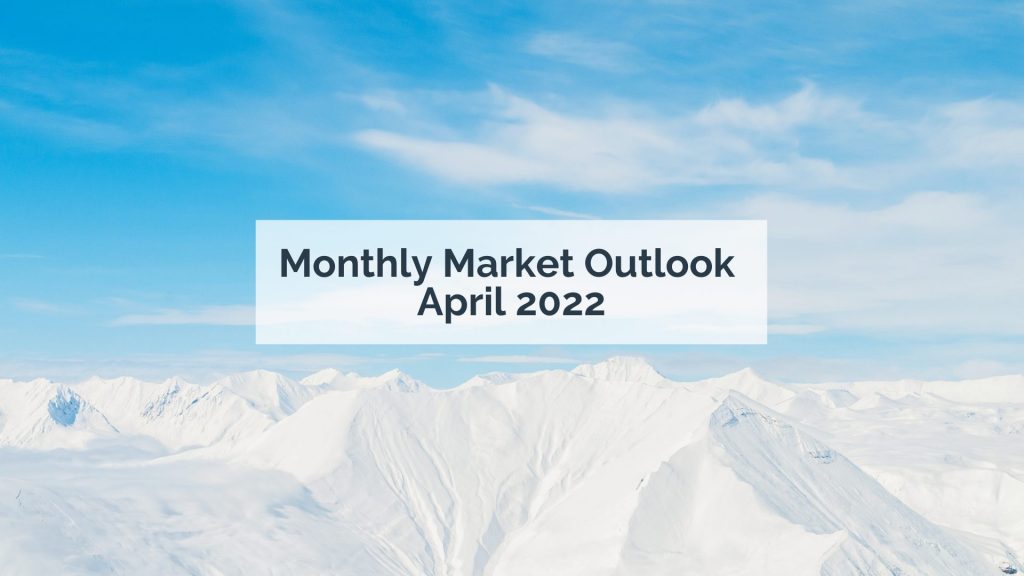
2022 April Outlook for G7 Currencies
2022 April Outlook for G7 Currencies
Dollar, Euro and Pound
Bullish outlook for Dollar: Dollar extended its rally to reach the highest level in nearly two years as geopolitical tensions and a hawkish Fed buoyed demand for the safe-haven asset. Fed officials signalled readiness to take on more aggressive actions to rein in inflation, and markets could expect rate hikes at each of the six remaining meetings this year, with Fed funds rate reaching 1.9% by the end of this year. Meanwhile, Biden administration and the European governments hit Russia with new sanctions, including the crack down on Russia’s ability to sell its gold reserves to support the Russian Ruble. Going forward, we expect the Dollar to maintain its strength, supported by safe haven flows amid the crisis in Ukraine.
Pressure on ECB to raise rates: Euro extended its decline to reach march lows at 1.089 as the crisis in Ukraine and soaring inflation threatens the outlook of the economy. Annual inflation rate in the Eurozone reached an all time high of 7.5% in March 2022 and surpassed market forecasts of 6.6% as the war in Ukraine drove fuel and natural gas prices to record high levels. With inflation level surging well above the ECB’s target of 2%, it continues to drive market expectations that the ECB will end its era of negative rates sooner than previously anticipated, with money markets are pricing two quarter-point hikes from the ECB in 2022. ECB President Lagarde also remarked that the central bank could end its bond-buying programme in 3Q 2022 as headwinds from the war in Ukraine worsens inflation.
Battle between inflation and growth risks in U.K.: Sterling suffered against a stronger greenback to reach 1.307 level at the start of April as heightened tensions in Ukraine dampened the appeal of the risk-on currency. Elsewhere, Chancellor Rishi Sunak announced a 6-billion pound ($7.9 billion) tax cut for workers, slashed fuel duty and signalled a future reduction in income tax to alleviate rising costs pressures and a squeeze in living standards. The Office for Budget Responsibility (OBR) downgraded its 2022 growth forecast to 3.8%, from a previous estimate of 6% and predicted that inflation could hit a 4 decade high at 8.7% this year, exacerbated by the conflict in Ukraine. The latest data showed consumer prices in the UK exceeded market estimates of 5.9% and jumped to a 3 decade high of 6.2% from a year earlier in February, stoking bets of further interest rate hikes by the Bank of England. In its latest monetary policy meeting, the BOE delivered its third consecutive interest rates hike, bringing borrowing costs to pre-pandemic levels but softened its guidance on future tightening in face of downside growth risks. The shift away from its previously hawkish stance and monetary policy divergence from the Fed could see further downside on the Pound against the greenback.
EURUSD: Bearish below 1.1120
| S1 | S2 | R1 | R2 |
| 1.0620 | – | 1.1120 | 1.1500 |

GBPUSD: Bearish below 1.3280
| S1 | S2 | R1 | R2 |
| 1.2700 | – | 1.3280 | 1.3650 |
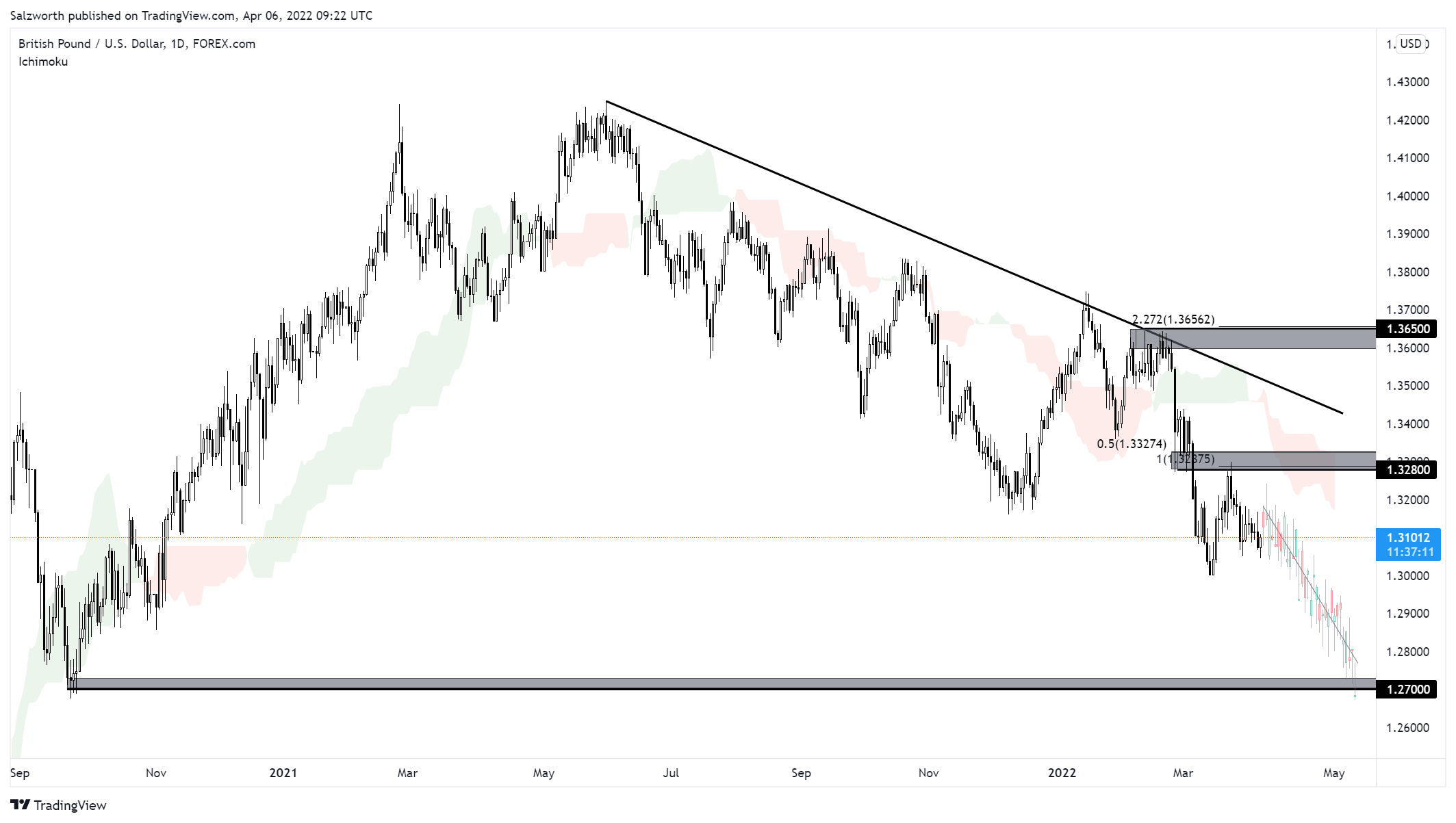
Commodity Currencies
RBA takes a more aggressive stance on tightening: RBA kept the cash rate unchanged at 0.1% in its latest meeting at the start of April, in line with market expectations. However, the central bank took a more aggressive tone by signalling that it could begin tightening monetary policy and raise interest rates within months if wages and inflation data produce strong results. RBA Governor Lowe said that the Board wanted to see inflation rate sustainably between 2% to 3% before raising interest rates.
Rising oil prices: Recent allegations of war crimes committed by Russian troops in the conflict with Ukraine prompted questions about possible further sanctions, which could further worsen supply disruptions. This comes after the U.S. committed to release 1 million barrels per day for six months starting in May in order to ease pressure off the oil market, the effects of which are now muted. Furthermore, talks to revive the Iran nuclear deal, which could increase Iranian exports, appear to have stalled.
BOC expected to raise rates further: The Loonie strengthened against the greenback, with USDCAD now trading around the $1.240 level. This comes with investors expecting that the BOC will be raising rates by further 50bps increments in a bid to tame inflationary pressures in the country. Furthermore, rising crude oil prices also further boosted expectations for the Loonie as Canada is one of the major net energy exporters in the region.
Hawkish RBNZ could further tighten monetary policy: Kiwi was supported by the recent spikes in commodity prices that have positively impacted such risk-on currencies from resource-rich countries. The IMF has recently called on the RBNZ to make “significant increases” to its cash rate in the short term in order to curb inflation. This is in line with the RBNZ’s own willingness to raise the cash rate by “larger increments if required over coming quarters”.
AUDUSD: Bullish above 0.7540
| S1 | S2 | R1 | R2 |
| 0.7540 | 0.7380 | 0.7890 | – |
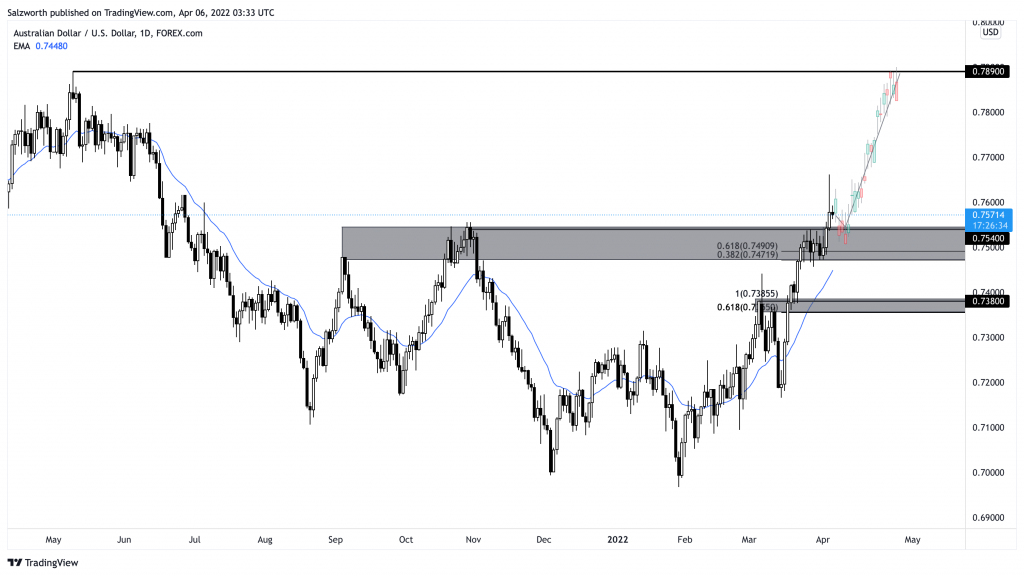
NZDUSD: Bullish above 0.6860
| S1 | S2 | R1 | R2 |
| 0.6860 | 0.6730 | 0.7200 | – |

USDCAD: Bearish below 1.2490
| S1 | S2 | R1 | R2 |
| 1.2490 | 1.2290 | 1.2630 | – |


